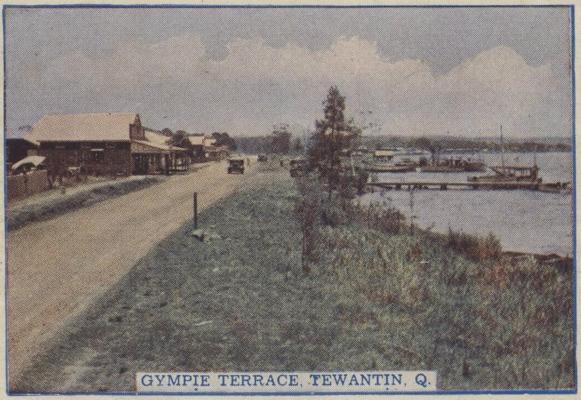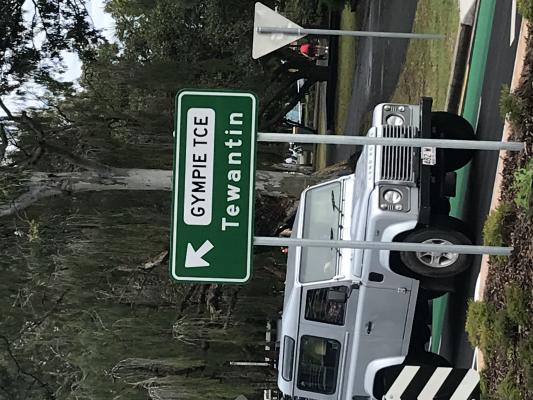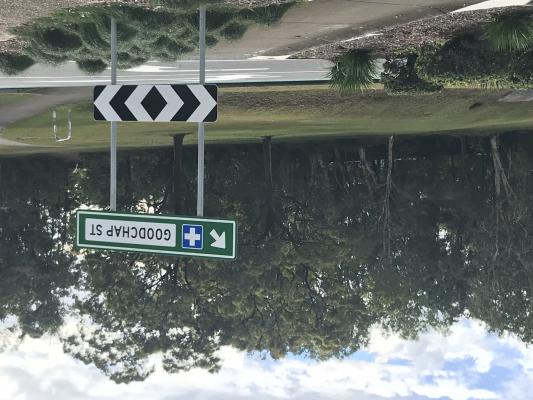By Phil Jarratt
Gympie Terrace and Goodchap Street
Have you ever driven past a street sign and wondered what was behind its name? Phil Jarratt is obsessed with it.
Okay, some of them are obvious, like Seaview Terrace, Sunshine Beach, or Production Street, Noosaville, but ever wondered about Goodchap Street, or Lionel Donovan Drive? I mean who was Lionel, and if he was important why name such as forgettable street after him? (Don’t worry, we’ll get to him.)
Of course, mysteries abound not only with our street names but also our place names. The jury is still out, for example, on whether Noosa is really derived from the Kabi Kabi “gnuthera”, meaning place of shadows, while there is more certainty that Tewantin is a corruption of “dau’wadhan”, meaning place of dead logs, which refers to the timber that was floated downriver from Elanda Point for shipping, not any particularly indolent residents.
Then there’s the interesting fact that almost every street name in what is now Sunshine Beach, but was once Noosa Beach Estate, is named after a Noosa Shire councillor of the 1927-30 council, the one that cut the deal with developer T.M. Burke to trade him the entire hill in return for 11 kilometres of road and two bridges.
Over the coming weeks we’re going to look at a whole range of streets with intriguing history, but today let’s start with an obvious one – Gympie Terrace. Well it leads to Gympie, right? Wrong. In fact, in the early 20th century it was the name not only of the sandy riverfront track that began at the Lake Doonella ford and finished at Munna Point, but of the entire area we now call Noosaville.
Nearing the end of the 19th century, gold-rich Gympie was still the biggest pool of visitors and investors for the Noosa area – as evidenced by the number of fishing shacks being built by well-heeled miners and merchants along the riverfront strip becoming known as “Gympie Terrace” – as journalist Aleck J. Ivimey noted after a visit in 1889: “There are gorgeous Gympie capitalists also, who come down en famille… for a week or two, while the visitors rest tranquil at a Noosa villa of their very own, the annual increase in value of which is more than sufficient to compensate for the cost of the trip, and the stay there…”
By the 1920s the area boasted grand estates as well as fishing shacks, a general store and caf¨¦ and a campground, but the first Gympie Terrace landholder, back in the 1870s, was Frederick Goodchap, a Gympie goldminer who had parlayed his gold stake into timber and had been one of the founders of McGhie, Luya & Co, whose mill at Elanda Point floated thousands of logs downriver to the company wharf at Colloy, on the North Shore opposite Munna Point. Goodchap’s estate included the riverfront from the mouth of Lake Doonella.
Fred Goodchap was the Tewantin JP and an important man around town, but he wasn’t there the day in 1880 when his estate became world famous for the capture of the notorious Aboriginal bushranger Johnny Campbell. Blacktracker Johnny Griffin had been following the violent Campbell north from the Maroochy River when he received word from the Tewantin Kabis that Campbell was camped in thick bush on the Goodchap property and would be heading down to the river to fish the following morning.
According to a dramatic newspaper report published around the world: “On nearing the river, and when they were all clear of the thick forest, Griffin suddenly dropped behind Campbell, and throwing his arms around him pinioned him and threw him down. The rest of the blacks then rushed up, and a struggle ensued, which must have been very severe … Campbell bit, kicked, and struggled, but to no purpose; he was overpowered at last by the force of numbers.
“Word was at once sent to Mr. Goodchap’s, but he was absent. Mrs. Goodchap, however, with praiseworthy energy, urged the blacks to secure him. The blacks then wanted to know if they should kill him, but Mrs. Goodchap said no, so they sat on him until help arrived. All the black and white population of Tewantin turned out promptly and ran a mad race to the scene of action, some on foot, some on horseback, some in boats. Everyone was in a state of the greatest excitement, and soon a welcome hurrah was heard, announcing that the
desperado was secured, and on his way to the lock-up.”
Campbell was subsequently publicly hanged in Brisbane and his pickled brain sent to Berlin for “scientific analysis”. For their bravery, the Tewantin Kabis were given a new boat, some fishing nets and coach tickets to Brisbane to watch the hanging.
Goodchap Street, Noosaville is now where you’ll find the Noosa Hospital and a range of medical services.








